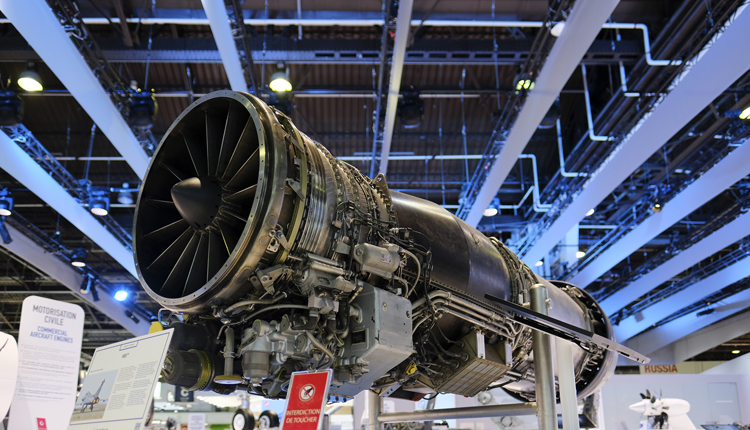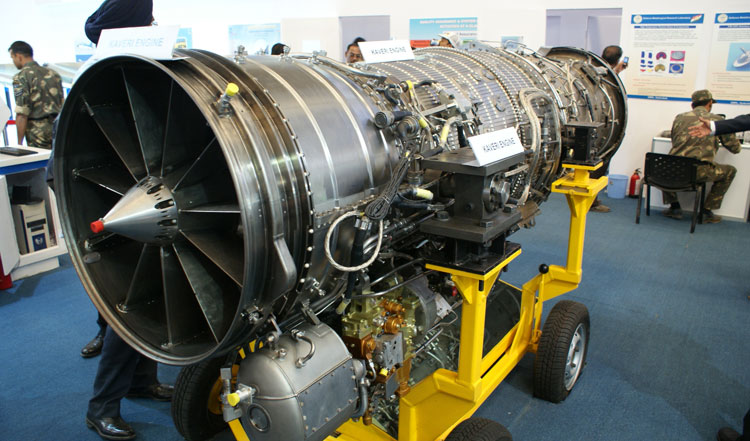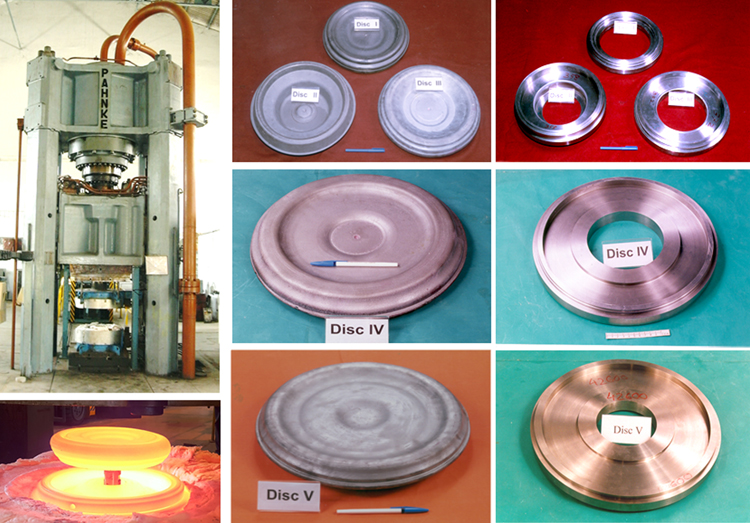INDIAN ARMED FORCES CHIEFS ON OUR RELENTLESS AND FOCUSED PUBLISHING EFFORTS

The insightful articles, inspiring narrations and analytical perspectives presented by the Editorial Team, establish an alluring connect with the reader. My compliments and best wishes to SP Guide Publications.

"Over the past 60 years, the growth of SP Guide Publications has mirrored the rising stature of Indian Navy. Its well-researched and informative magazines on Defence and Aerospace sector have served to shape an educated opinion of our military personnel, policy makers and the public alike. I wish SP's Publication team continued success, fair winds and following seas in all future endeavour!"

Since, its inception in 1964, SP Guide Publications has consistently demonstrated commitment to high-quality journalism in the aerospace and defence sectors, earning a well-deserved reputation as Asia's largest media house in this domain. I wish SP Guide Publications continued success in its pursuit of excellence.
- A leap in Indian aviation: Prime Minister Modi inaugurates Safran's Global MRO Hub in Hyderabad, Calls It a Milestone
- All about HAMMER Smart Precision Guided Weapon in India — “BEL-Safran Collaboration”
- India, Germany deepen defence ties as High Defence Committee charts ambitious plan
- True strategic autonomy will come only when our code is as indigenous as our hardware: Rajnath Singh
- EXCLUSIVE: Manish Kumar Jha speaks with Air Marshal Ashutosh Dixit, Chief of Integrated Defence Staff (CISC) at Headquarters, Integrated Defence Staff (IDS)
- Experts Speak: G20 Summit: A Sign of Global Fracture
Aero Engines
Aero Engine is an important critical technology. We need to establish a JV for aero engines with an OEM at the earliest.
 |
The Author is Former Director General of Information Systems and A Special Forces Veteran, Indian Army |

Former President APJ Abdul Kalam had emphasised self reliance (Atmanirbhar) in a number of critical technologies including engines. In his autobiography 'Wings of Fire' he said key to the modern world order lies in superiority through technology. He wrote, "When the Chinese war philosopher Sun Tzu ruminated over 2000 years ago that what matters is not decimating the enemy army physically but breaking his will so as to make him concede defeat in the mind, he seems to have visualised domination of technology in the twentieth century theatres of war." Kalam further wrote, "Our Self Reliance Mission in Defence System 1995–2005 will provide the Armed Forces with a state-of-the-art competitive weapons system." Ironically we made only some advances compared to what was planned in Self Reliance Mission in Defence System 1995–2005.
In 1986, the Gas Turbine Research Establishment (GTRE) under the Defence Research and Development Organisation launched a project for developing the GTX-35VS Kaveri after-burning turbofan engine. Kaveri was to power the indigenous Light Combat Aircraft (LCA) 'Tejas' approved three years earlier. However, the Kaveri programme failed to satisfy necessary technical requirements and was officially delinked from the Tejas programme in September 2008 though work on the Kaveri engine continued.
IAF Chief, Air Chief Marshal R.K.S. Bhadauria has indicated the possibility of a JV in developing fighter jet aero-engine in India potentially setting forth a new era of aerospace in India

In January 2013, GTRE decided to abandon the plan for co-development of Kaveri with Snecma of France (now known as Safran Aircraft Engines) but said they still need an overseas partner, which would be selected through competitive bidding. In November 2014, DRDO decided to abandon the Kaveri engine programme due to its shortcomings. However, on July 4, 2016, media reported that France had offered to invest Euro 1 billion to revive the stalled Kaveri engine project through a joint venture (JV). This was confirmed by DRDO in November 2016. DRDO and French Snecma have tied up to revive Kaveri Engine as part of the offsets deal for the 36 Rafale jets deal. French media also reported in 2018 that French Snecma will help in production of Kaveri engine by sharing M88 technology. The Snecma M88 is a French after-burning turbofan engine developed by Snecma for the Dassault Rafale fighter aircraft.
During his annual press conference on September 5, 2020, Indian Air Force (IAF) Chief, Air Chief Marshal R.K.S. Bhadauria indicated the possibility of a JV in developing fighter jet aero-engine in India potentially setting forth a new era of aerospace in India. However, the Comptroller and Auditor General (CAG) pointed out that even though the IAF had formally inducted five of the 36 Rafale jets, the plane's maker Dassault Aviation and weapons-supplier MBDA had not confirmed the transfer of technology (ToT) to the DRDO which was part of the contract.
DMRL and MIDHANI have jointly produced 200 HPC disc forgings which have been supplied to HAL for fitting into the Adour 804/811 and 871 engines that power IAF's Jaguar/Hawk aircraft
Talking to media in recent months, Air Chief Marshal Bhadauria said, "In military aerospace zone, I think the engine is the biggest problem today and that is area that we must address. DRDO has been at it .... Engine is a complex issue. Technology involved is complex. DRDO and all concerned be it Safran, Rolls-Royce and others have been in discussion. As you asked specifically about Safran, the technology transfer did not materialise between DRDO and Safran. If they firm up the commitment for transfer of technology, it will become part of the offset. In terms of what is happening on the engine, there is a concerted effort to form a JV. Kaveri (Engine) came a long way but now it is not possible to assimilate it in AMCA kind of project. So JV is what we are looking at. We will see soon that the contours of JV get fructified."
Recent media reports of May 26, 2021, have indicated that DRDO's Hyderabad-based Defence Metallurgical Research Laboratory (DMRL) has taken a step forward in meeting the aeronautical challenge. The Ministry of Defence (MoD) announced on May 22, "The DRDO established the near-isothermal forging technology to produce all the five stages of high-pressure compressor (HPC) discs out of difficult-to-deform, titanium alloy, using its unique 2000 MT (metric tonne) isothermal forge press. With this development, India has joined the league of limited global engine developers to have the manufacturing capabilities of such critical aero-engine components."
The above technological breakthrough involved developing complex titanium and nickel-based alloys that can withstand temperatures of more than 1,000 degrees Celsius. An aero-engine requires finely tuned design and manufacture. To develop technology to produce the five-stage HPC discs, DMRL transferred technology to defence public sector undertaking MIDHANI through a licensing agreement for technology transfer (LAToT). DMRL and MIDHANI have jointly produced 200 HPC disc forgings pertaining to various compressor stages. These have been supplied to Hindustan Aeronautics Limited (HAL) for fitting into the Adour 804/811 and 871 engines that power IAF's Jaguar/Hawk aircraft. The indigenous HPC discs have met all the requirements stipulated by airworthiness agencies and the technology has been type certified.

From the above, it appears that both Dassault Aviation and MBDA have backtracked on ToT to the DRDO under the offset clause which was part of the contract. Perhaps this needs to be taken up directly with French President Emmanuel Macron by Prime Minister Narendra Modi given the excellent Indo-French relations. Apparently, this backtracking by Dassault Aviation and MBDA has also contributed to removal of the offset clause in the Defence Acquisition Procedure (DAP) 2020.
Aero Engine is an important critical technology. Even if the French companies do not agree to ToT under the offset clause, at least they should be made to agree to a JV under 'Make in India'. After all the Indo-Russian JV on BrahMos did not include ToT of what was inside the missile. China's Shenyang Aerospace Corporation and Aero Engine Corporation of China are indigenous Chinese jet engine manufacturers that initially manufactured copies of Russian military jet engines but more recently are manufacturing indigenous designs. Concurrently, Japan's Aero Engine Corporation in partnership with Rolls-Royce and several Japanese industrial entities has begun developing small to medium thrust high bypass turbofan engines for regional airliners use. We need to establish a JV for aero engines with an overseas Original Equipment Manufacturer (OEM) at the earliest.





